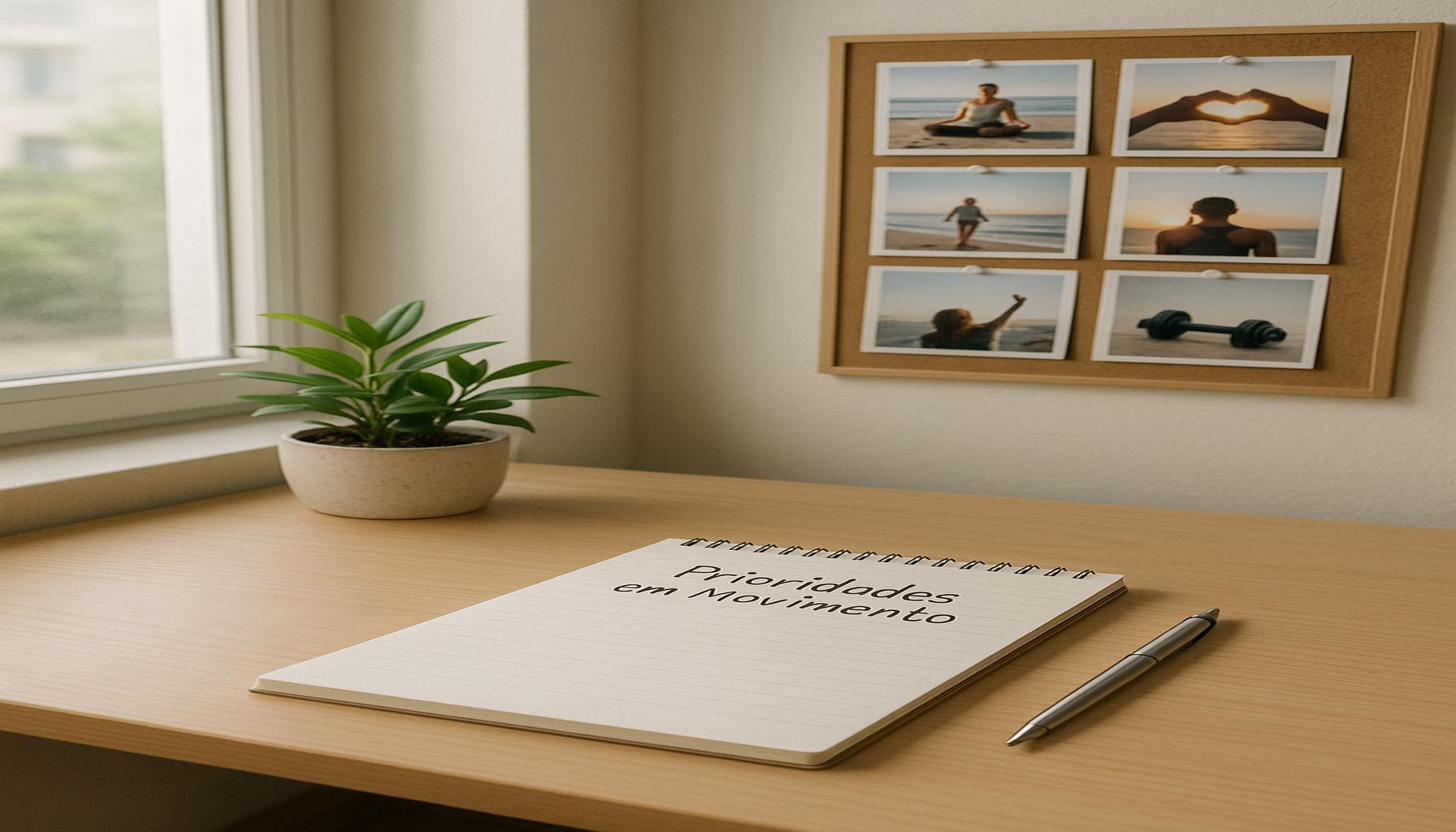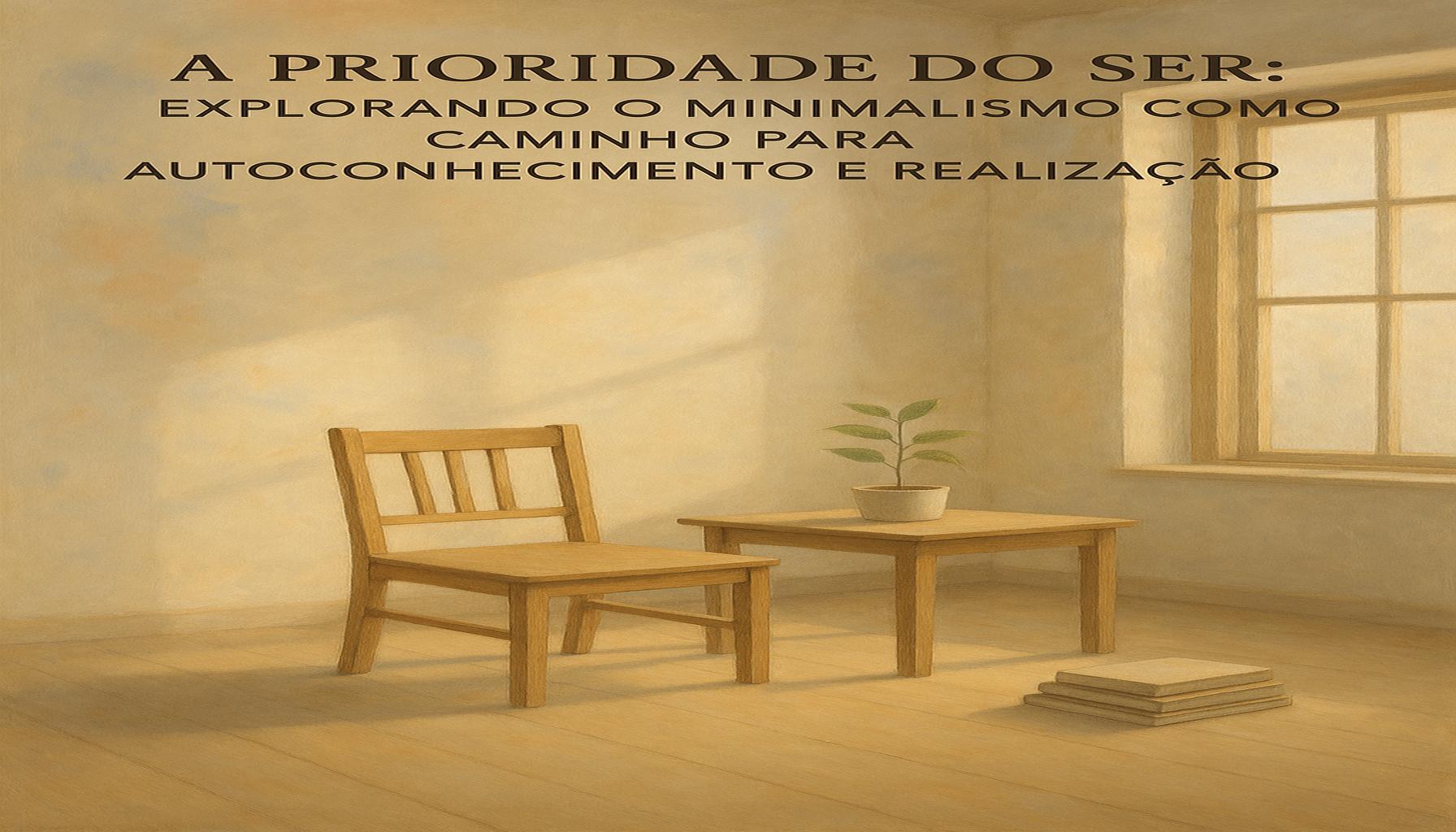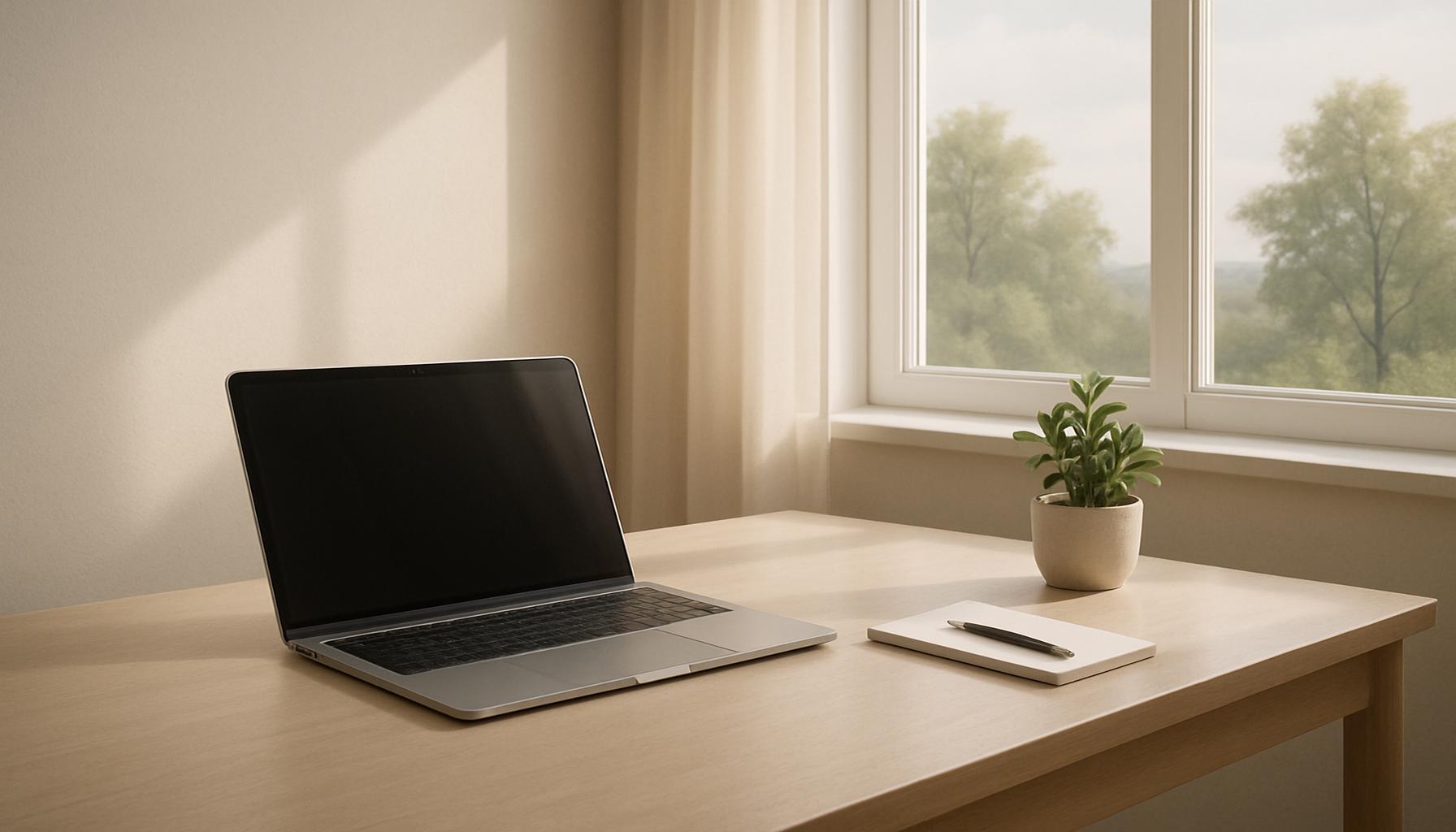Priorities in Motion: Strategizing Changes in Personal Life with a Minimalist Approach

The Power of Minimalism in a Chaotic World
Life unfolds as a series of transitions that call for flexibility and resilience. With rapid technological advancements, societal shifts, and personal life changes, our priorities shift constantly. Yet, amid chaos, fostering a sense of simplicity can be deeply grounding. This is where a minimalist approach becomes invaluable. Embracing minimalism allows individuals to cut through the noise, enabling them to concentrate on what truly enriches their lives.
Clarity of Purpose
Establishing what is most important in your life is the cornerstone of minimalism. This clarity helps to form a robust foundation on which to build your pursuits. For instance, someone may realize that nurturing family relationships is a higher priority than accumulating material wealth. This understanding can lead to life-changing decisions, such as reallocating time to weekly family dinners or weekend outings. By defining your purpose, you create a filter through which you can examine future choices and commitments.
Simplified Choices
In an age of information overload, making simple choices is more crucial than ever. Reducing clutter—both physical and mental—can lead to enhanced decision-making capabilities. Take, for example, the concept of a capsule wardrobe: minimizing clothing options allows the individual to select outfits that resonate with their style without the overwhelm of choice paralysis. Studies show that fewer choices can lead to greater satisfaction, as the brain is freed from the burden of constant decision-making.
Intentional Living
Adopting a minimalist mindset encourages intentional living. It invites individuals to align their actions with their core values. For instance, a person who values sustainability might choose to prioritize experiences over possessions, opting for travel or community involvement instead of accumulating items that offer temporary joy. This lifestyle shift can lead to an overall sense of fulfillment and purpose, ultimately enhancing one’s mental well-being.
As you begin to integrate minimalism into your life, consider how adjustments in your daily routines could cultivate a more rewarding existence. Reflect on your habits, possessions, and commitments; are they serving you or holding you back? This process of evaluation allows you to make mindful decisions about what to retain, replace, or remove entirely.

Are you ready to embrace the transformative journey that minimalism offers? As we explore this approach further, you’ll discover practical strategies that not only simplify your surroundings but also enrich your daily experiences, promoting a sense of tranquility and clarity in an otherwise busy world.
DISCOVER MORE: Click here to boost your focus
Establishing Your Priorities: The Foundation of Minimalism
To wholeheartedly embrace minimalism, the first step is to identify your priorities. This means taking a moment to reflect on what you truly value in life. Are you focusing on your career, your health, or the relationships you cherish? When you nail down your core priorities, it sets the stage for the necessary changes you want to implement. A simple way to start is by creating a values list, where you jot down the top five or six areas of life that matter most to you.
Here are some common priorities people often identify:
- Family and Relationships
- Health and Fitness
- Career and Personal Development
- Education and Learning
- Financial Wellness
- Creativity and Hobbies
Once you have your list, the next important step is to evaluate how much time and energy you direct toward each area. Are these priorities reflected in your daily schedule? It may be illuminating to do a time audit, tracking how you spend your hours over a week. The findings could reveal surprising insights about where your energy goes and whether it aligns with what you value most.
Eliminate the Excess
With priorities established and understood, the next phase involves eliminating the excess. Minimalism is not merely about having fewer items; it is about creating space—both physically and mentally—for what truly matters. This might mean decluttering your living space or reassessing your social commitments. If certain activities or possessions do not enrich your life, it may be time to bid farewell.
Consider the following actionable steps to declutter your life:
- Assess each item in your home: Does it contribute positively to your life, or is it just taking up space?
- Evaluate your commitments: Which engagements bring you joy, and which have become obligations that drain your energy?
- Start small: Tackle one area at a time—perhaps a closet, a room, or even your digital space, like your email inbox.
By simplifying both your physical surroundings and your mental landscape, you fortify your ability to nurture your priorities. The exercises of prioritization and reduction set the groundwork upon which you can build a more intentional life. As you create room for what you love, you’ll find your emotional and mental clarity improves, allowing for more thoughtful decision-making. In a world that often prioritizes quantity over quality, choosing to focus on the essentials can lead to profound changes.
In the ensuing sections of this article, we will delve deeper into strategies for continuous evaluation and realignment of your personal priorities, offering you a roadmap to navigate life’s inevitable changes while maintaining a minimalist approach.
| Advantage | Description |
|---|---|
| Clarity in Goals | A minimalist approach clarifies what truly matters, allowing individuals to focus on their core aspirations without undue distractions. |
| Reduced Stress | By eliminating excess, individuals can experience lower stress levels, leading to improved mental well-being and overall happiness. |
| Increased Productivity | Streamlining one’s life results in enhanced focus, enabling individuals to achieve tasks more quickly and efficiently, leading to greater output. |
| Financial Freedom | Embracing minimalism often translates into reduced expenses, allowing for better financial management and the possibility for investment in personal growth. |
The minimalist lifestyle champions the idea that less is more, encouraging individuals to prioritize their mental clarity and emotional health. In an ever-busy world, reprioritizing tasks not only stabilizes one’s schedule but also fosters a sense of accomplishment and fulfillment. The art of decluttering is not just physical; it is also emotional and mental, allowing for a transformation that promotes not only sustainability but also long-term happiness and peace of mind. As individuals re-evaluate their commitments, they discover space for deeper connections and more meaningful experiences that bring lasting joy. Therefore, adopting a minimalist approach not only aids in strategizing personal changes but also aligns one’s life with their core values and objectives. The journey may seem daunting, but the rewards promise a vibrant and enriched life dedicated to what truly matters.
DIVE DEEPER: Click here to uncover the transformative power of decluttering
Implementing Intentional Changes: The Role of Mindfulness
Once you have successfully established your priorities and eliminated the excess elements from your life, the next step lies in implementing intentional changes through mindfulness. Mindfulness, defined as the mental practice of being fully present and engaged, helps you to navigate these changes with a clear mindset. It allows you to focus your energy on what truly matters while maintaining a sense of peace amidst the chaos of everyday life.
Incorporating mindfulness techniques can profoundly transform the way you approach your time and responsibilities. For example, consider integrating daily meditation sessions, even if just for five minutes. This practice can enhance your ability to remain centered, enabling you to better assess which choices align with your priorities. Research has shown that mindfulness can reduce stress, improve decision-making, and foster better emotional regulation—qualities essential in a minimalist lifestyle.
Setting Intentional Goals
As you engage in mindfulness, it’s advantageous to establish intentional goals that align with your identified priorities. These goals should be specific, measurable, attainable, relevant, and time-bound (SMART). For example, if your priority is health, a SMART goal might be “I will exercise for 30 minutes, three times a week,” rather than simply saying you want to get fit. This structured approach provides clarity and conviction, ensuring that you keep your focus on what truly enriches your life.
When setting these goals, it’s essential to regularly revisit and adjust them based on your evolving needs. Life is unpredictable; circumstances change, and your priorities may shift too. Therefore, maintaining a flexible mindset is crucial. This adaptability not only strengthens your resilience but also reinforces the minimalist ideal of focusing on the essentials.
Creating Mindful Routines
Establishing mindful routines can further support your new minimalist paradigm. Consider incorporating daily rituals that align with your priorities. For example, if creativity is high on your values list, set aside dedicated time each week for artistic pursuits—be it painting, writing, or any other passion. Developing these habits can create structure in your life and ensure that your priorities come to life through action.
Additionally, pay attention to the moments when you feel overwhelmed. Use these sensations as triggers for mindfulness. Pause to breathe and reflect on your current actions. Ask yourself whether they align with your established priorities or if they are detrimental distractions. This reflective practice helps in making subconscious choices more conscious, aiding in the minimization of stressors that diverge from your essential values.
Learning to Say No
A vital skill in maintaining a minimalist approach is the ability to say no. As you redefine your priorities and goals, you may find that certain invitations or tasks conflict with your vision. Streamlining your commitments enables you to grant yourself the time and mental space needed to cultivate what you truly care about. Whether it’s declining social obligations, limiting work-related projects, or even minimizing screen time, embracing the word “no” can wonderfully free you from the shackles of excessive obligation.
This practice not only nurtures your priorities but can also inspire others around you to embrace a similar mindset. As you convey your commitment to a minimalist lifestyle, you encourage a ripple effect, inviting those in your circle to consider their own priorities and excesses. By performing these mindful actions, you continue to build a life centered on the values that matter most to you, ever the architect of your own journey.
DISCOVER MORE: Click here to boost your focus
Conclusion: Embracing a Mindful Minimalist Journey
In today’s fast-paced world, understanding priorities is more critical than ever. By adopting a minimalist approach, you can strategically redefine your life in a manner that highlights what truly matters. This transformative journey toward simplicity encourages you to unravel the clutter—both physically and mentally—and focus on cultivating your core values.
Through the integration of mindfulness, intentional goal setting, and the creation of mindful routines, you begin to navigate the complexities of life with intention. These practices enable you to maintain clarity and direction, allowing space for growth and flexibility. Remember that life is a dynamic canvas, and as your priorities evolve, so too should your strategies. Embracing the power of saying no can further liberate your time, enabling you to invest it in pursuits that enrich and fulfill you.
The minimalist lifestyle is not merely about de-cluttering; it’s about creating a framework that supports a balanced, intentional existence. As you embark on this journey, consider the ripple effect your changes may have on those around you. Your commitment to prioritizing what truly matters can inspire others to reflect on their own lives, prompting a collective shift towards more meaningful living.
As you embrace priorities in motion, remember that this strategy is unique to you. Live consciously and cultivate a life where each choice reflects your intentions, passions, and aspirations. In doing so, you’ll not only navigate your own path but also contribute to a more mindful, purpose-driven community.


